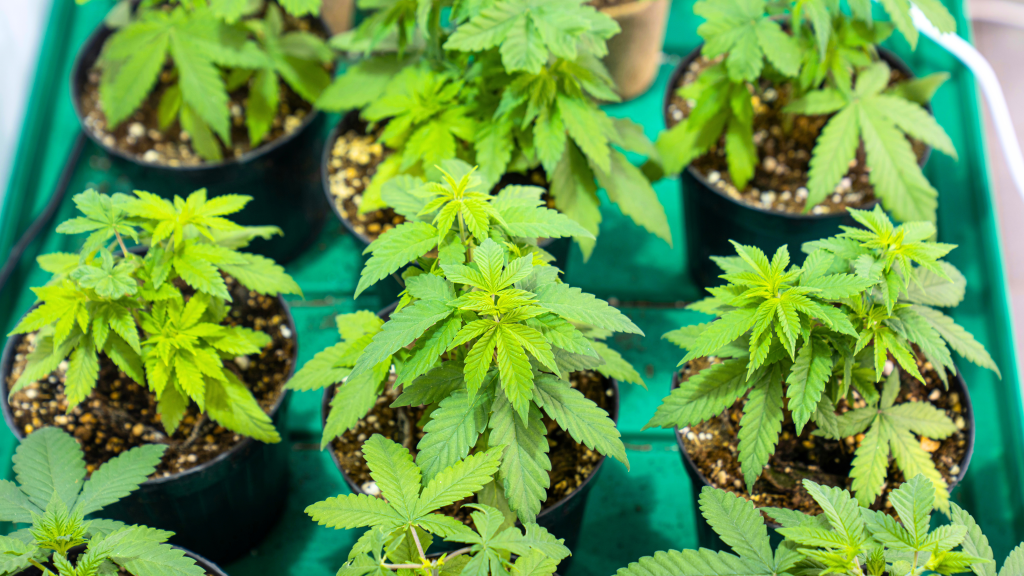
Let’s discuss some of the different strains of cannabis, which ones grow best in Rhode Island, and review some tips to help you get started with your foray into growing weed. We’re going to avoid discussing any potential legal ramifications, so please familiarize yourself with your state’s and town’s policy on growing cannabis.
First decide whether you want to grow indoors or outdoors, and understand that your experience growing cannabis may vary depending on what region you live in and even by state within a region. For example, Rhode Island and Massachusetts run warmer than such nearby states as New Hampshire and Vermont.
Cannabis sativa is slender with long, thin leaves and a taller stalk which is ideal for handling warmer temperatures with a lot of rainfall. The problem with sativa is it has a long flowering time of up to 14 weeks. Cannabis indica is the exact opposite. It has shorter, fatter leaves, which allow it to handle cooler temperatures better. There is low resistance to heavy rainfall but it has a shorter flowering time which makes it perfect for an early harvest in areas with long winters.
The best bet for growing weed in the Northeast, however, is obtaining a well-bred, hybrid strain of ruderalis, a third type of cannabis. It is used to breed high-CBD and auto-flowering cannabis varieties. This is the hardiest type, able to withstand even the harshest climates. In the Northeast, hybrid strains bred to flower faster work best.
Some of the best strains for Rhode Island and the New England area include, but are not limited to: Runtz Punch, Bruce Banner #3 (aka BB3), Hulkberry, Shiskaberry, Black Jack CBD, Mimosa Shot, Lemon AK Auto, Auto Orange Bud, Cookies Auto (formerly Girl Scout Cookies), CBD White Widow Auto, Wedding Cheesecake Auto, and Fruit Punch Auto. Remember to obtain your seeds from a reputable source and to understand the particular strain’s cycle of growth.
For outdoor growing, find a place with optimal sunshine and the right type of soil. Also, take into account the local wildlife, especially the insects, and plan appropriately.
It sounds basic, but the most important thing is to understand exactly what you are growing.
Understanding the plant’s growth cycle and biology will help you anticipate the needs of your plant at a particular stage of its growth, and ensure that you can provide it with optimal conditions. You will also be able to identify when something goes wrong and understand how to address the situation before it becomes a catastrophe.
The soil that you grow in should be a little muddy and clay-like but it also needs to have some amount of sand. It should not be too tight or too loose to make sure it does not retain too much or too little water. The soil should also be strong enough to retain nutrients which can be added to your plants as needed. Most growers are familiar with the necessity of nitrogen, phosphorus, and potassium. Micronutrients are needed for your plants as well. Calcium, boron, molybdenum, manganese, sulfur, and others will give an added boost to your plants and are essential to their overall health and well-being.
Choosing the correct grow lights, tents, and fans are also an important part of the process. A common mistake among new growers is opting for cheaper lights. Quantum board LED grow lights offer the best lighting experience. They may cost more, but the end result will be worth it. For your grow tent, the best advice is to be careful about the size. Choosing one that is too large or too small will have a deleterious effect on your plants. Consider the number of plants you intend to grow and their size, do a little math, and choose accordingly. Your fan is important to get fresh air inside the tent and to push stale air out, and also helps control the temperature. In order to understand the fan needed you need to understand the CFM reading (cubic feet per minute). Use a fan with larger CFM readings for bigger grow tents and a fan with lower numbers for small grow tents.
Many factors decide the quality of your plants, including trimming them regularly (a must) and getting water to them on time. There is no magical schedule for watering your plants. Pay attention to the soil. Stick your finger into the soil. If it’s wet and sticky then it’s fine. If it’s dry, they need water. Pretty self-explanatory.
There are many other factors involved in growing your own cannabis, but this is a good starting off point for new growers. Plant your plants, harvest, and enjoy the process!
For more information on how to grow at home, check out askgrowers.com/cannabis-growing-guide.
